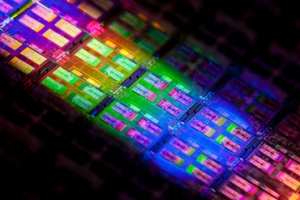 In a bid to entrench its technology further into hyper-scale datacentres, Intel on Wednesday showcased chip innovations that will see the manufacturer turn up the heat on rivals AMD and ARM for the datacentres of cloud service providers.
In a bid to entrench its technology further into hyper-scale datacentres, Intel on Wednesday showcased chip innovations that will see the manufacturer turn up the heat on rivals AMD and ARM for the datacentres of cloud service providers.
At a media event on Wednesday, Intel’s Diane Bryant, senior vice president and general manager of the datacentre and connected systems group introduced the company’s long anticipated successor to the first generation 64-bit Atom processor, the Atom C2000, the first product family based on Intel’s “Silvermont” micro-architecture and developed using a 22nm process.
Intel says it will be delivering 13 customised Atom processors that will be optimised for specific light weight workloads including dedicated hosted, distributed caching and content delivery. The chips will feature up to eight cores, a range of 6 to 20 watts TDP (Thermal Design Power), integrated Ethernet and support up to 64 GB of memory, and the company says the performance will be between four to eight times what the previous generation delivered.
Alongside the launch of the Atom product family Intel also introduced an optical fibre and silicon photonics connector it worked on with Corning which delivers 1.6Tbps of bandwidth, and an entry-level microserver-optimised switch that when combined with the integrated Ethernet controller on the new Atom chips can be used to create software defined networking solutions for datacentres.
“As the world becomes more and more mobile, the pressure to support billions of devices and users is changing the very composition of datacentres,” Bryant said. “From leadership in silicon and SoC design to rack architecture and software enabling, Intel is providing the key innovations that original equipment manufacturers, telecommunications equipment makers and cloud service providers require to build the datacentres of the future.”
The new chip designs and product offerings will give Intel the opportunity to expand into the cold storage and networking markets, the latter being highlighted by Intel’s recent partnership with Ericsson to get its Atom-based switches into the cloud systems solutions it sells to telcos.
Moreover, the company’s move to integrate all three communication workloads – storage, processing and networking – onto the single chip shows the company is serious about staying ahead of its competitors ARM and AMD (and IBM) when it comes to keeping its technology well entrenched in the datacentres of cloud service providers. HPC datacentres require flexibility – particularly as their architectures move towards the software-defined everything model, and it will be interesting to see how Intel’s competitors respond when the company begins using a 14nm process next year; AMD’s 64-bit ARM-based server chips, code-named “Seattle,” are due out in Q1 2014.
It will also be interesting to see whether Intel’s move into the networking space ruffles Cisco’s feathers.
………………………………
Big Data World Congress News…
Discover the business value of Big Data at the Big Data World Congress taking place on 3- 4 December 2013, at The Westin Grand Munich, Munich, Germany : FREE EXPO PASS

Written by brownleel
Leave a comment